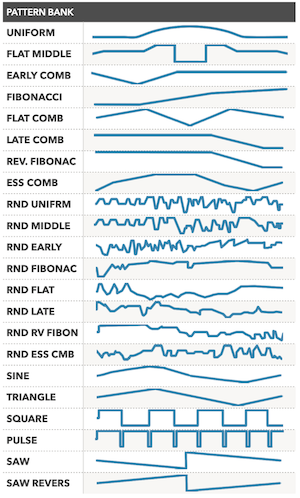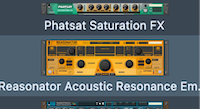All physical objects resonate. Some have simple uniform resonance while others have complex resonance. When you play any acoustic instrument, you get a natural Acoustic Resonance effect. This sound is what you finally hear from your instrument when any sound source at its fundamental frequency is triggered. Acoustical instruments can have multiple harmonics. Higher harmonics correspond to integer multiples of the fundamental frequency. Acoustic resonance effects are a type of phase shift, but is better known as a Comb Filter with a wide range. A Resonator is more of a special effect with its own character than the classical Comb Filter. Some resonators may generate sound by exciting adjacent air particles in the surrounding medium.
The term “Acoustic Resonance” is sometimes used to refer to mechanical resonance in the frequency range of human hearing, but since acoustics is defined in general terms concerning vibrational waves in matter, acoustic resonance can occur at frequencies outside the range of human hearing.
When a string is vibrating in air, the resulting sound waves in the air have frequency patterns related to the frequency patterns of the vibrating string. The guitar string collides with the surrounding air molecules and generates longitudinal pressure waves in that medium.
Acoustic resonance is important for instrument builders and also for hearing.
Resonators help to create additional accents to any type of signal source by using a resonance decay effect. This can add some resonance and reverb of new modulated frequencies created from the fundamental frequency. Resonators interact with human ears and with the environment. Resonators isolate and emphasise matching frequency components of incoming signals. For example, any room with walls and air can be a Resonator.
A Resonator is one of the many underrated and esoteric effects that can sound fantastic. Once you use it - you will want use it over and over again. It is a very musical-sounding, natural effect with any audio signal source. It is perfect for electronic and acoustic instruments, such as guitars, organ tubes, and strings.
Engines A / B (Resonators)
Resonance Decay - Resonance Decay Time
Keytrack - Faster decay at higher frequencies
Width - Stereo spread of individual resonators
Mix - Mix between dry and wet signal
Depth - Depth of modulation of selected source and destination
Destination Destination of modulation:
- Decay
- Keytrack
- Spread
Source:
CURVE: Use pattern bank of curves as source of modulation.
LFO: Use pattern bank of LFO waveforms as source of modulation
Pattern - Bank of waveforms for using as Curve or LFO modulation. Includes 23 waveforms
LFO: LFO - RATE: Duration of 1 cycle of the LFO

Multi-Mode Filter: Types: LP12 / LP24 / LP-BRICKWALL / BP6 / HP12 / HP-BRICKWALL
Cutoff: Cutoff frequency
Main controllers
Morph A/B - Morphing A/B Resonator sections with their own individual settings
Gain A / Gain B - Input Gain level
Post Filter - Post Multimode filter with filter types: LP12 / LP24 / LP-BRICKWALL / BP6 / HP12 / HPBRICKWALL
Cutoff: Cutoff frequency
Resonance: Strength of resonant peak at the cutoff frequency
Gain - Gain level of the Master Output
Soft Bypass - Bypass variant with fades for Resonators A / B
Upgrade v. 2.0.4:
- High Resolution optimisation / bug fix
- Gold colour skin as default icon in browser list is fixed

Update 2.0.2:
- Gold colour skin at device browser list
Update 2.0.1:
- Bug hotfix for Reason v.10. Previous version Reasonator 2.0.0 have a bug in Reason 10 (not possible to add device to the rack)
- Skin support for Reason 10, Reason 11 users
- Now default skin colour: Gold
Update 2.0:
- New 3U panel design
- 2 colour skins: GOLDEN and SILVER
- new LFO Sync mode (Tempo Synced)
- small bug fixes
- FREE for Reasonator v.1 owners
Update 1.1:
- Post Filter Resonance bugfix
- LFO destination of Resonator A bugfix
- LFO Rate, Rate-X of Resonator B bugfix
- Improved GUI (knobs projection)






